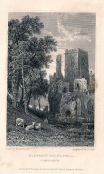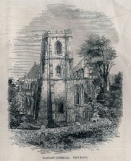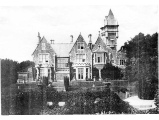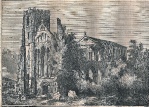Llandaff -



The City -
At the beginning of the nineteenth century, Benjamin Malkin wrote that Llandaff was a mixture of ‘elegant residences, belonging to dignitaries and other gentlemen’ and ‘houses of poorer people’ with ‘little of that neatness and accommodation, which either cleanly retirement or the more frequent intercourses of society, afford’.
By 1833 the population had increased to 1,138 and the village was almost completely built-



Although during this period Llandaff did not expand much, it became, as a result of Cardiff’s growth, a much sought-

Howell’s School was founded in 1860, with money left in trust by Thomas Howell, a Spanish-
The twentieth century has seen much change in Llandaff. St. Michael’s Theological College was originally founded in 1892 in Aberdare, but in 1907 it was transferred to Llandaff. In 1920 the College was extended by the addition of new residential buildings and in 1959 a new chapel was added to the complex.
In 1922, after centuries of independence, the boundaries of Cardiff were extended to include Llandaff. As always, the River Taff provided a physical link between Cardiff Castle and Llandaff Cathedral, but by now there was also a continuous series of public parks alongside the river between the two historic landmarks.



5
5